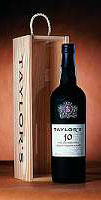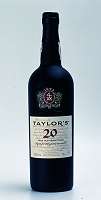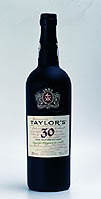I don’t know your father, but being one myself, I can say with strong assurance that he does not want the things that you are most likely to buy for him.
Not being a moron, he is perfectly capable of buying a polo shirt for himself, and he doesn’t want a tie any more than your mother wants a vacuum cleaner. What he actually wants is something that is directly pleasurable, and that he wouldn’t have thought to get himself.
In brief, Daddy wants Port, though he probably doesn’t know that yet. He may remain in the dark because he shares the common misconception that Port is a winter drink, but that makes Father’s Day the perfect time to enlighten him.
He may remain in the dark because he shares the common misconception that Port is a winter drink, but that makes Father’s Day the perfect time to enlighten him.
It may make some sense to reserve vintage Port for fall, winter or spring–but no more than it makes sense to reserve Riesling for summer. In any case, we can sidestep that entire issue because vintage Port is hardly the only sort of Port, and vintage Port isn’t the best gift anyway. That title clearly belongs to aged Tawny Port, and the plain fact of the matter is that aged Tawny Port is fantastic all year ‘round.
Including in summer. I’ve been to Oporto and the Douro Valley several times, but one of the most memorable visits was in September of 2003, a famously hot year. For an entire week, I was served aged Tawny Port. Chilled.
It was absolutely delicious, and though I assumed that the chilling was  a temporary reaction to climatic conditions, I was wrong. Those who actually make the stuff routinely serve it chilled, and for multiple reasons. Cooler temperatures tamp down Port’s rather heady alcohol. Chilling brings up Port’s acidity, and allowing aged Tawny Port to warm slowly as it comes up to room temperature makes an already phenomenally complex wine even more complex, as the nuances that come to the fore are changed with each sniff and sip.
a temporary reaction to climatic conditions, I was wrong. Those who actually make the stuff routinely serve it chilled, and for multiple reasons. Cooler temperatures tamp down Port’s rather heady alcohol. Chilling brings up Port’s acidity, and allowing aged Tawny Port to warm slowly as it comes up to room temperature makes an already phenomenally complex wine even more complex, as the nuances that come to the fore are changed with each sniff and sip.
There are other reasons why aged Tawny Port is a perfect gift, not least among them being that your father can enjoy his bottle over the course of an entire month if he wishes to replace the stopper and keep his present in the refrigerator. It won’t be quite as fresh and complex at the end of that month, but it will be pretty close to what it was on Dad’s Day, whereas almost any other wine would long since have cracked up.
Another advantage is that you’ve got four spending options at your disposal, since you can purchase aged Tawnies at 10, 20, 30 or 40 years of ageing.
All of the brands that are sold in export markets are good, and most are very good, but this year I want to recommend the wines of my favorite house from that torrid summer of 2003: Taylor Fladgate.
very good, but this year I want to recommend the wines of my favorite house from that torrid summer of 2003: Taylor Fladgate.
Taylor’s vintage Ports are the highest rated (and most expensive) in many declared years, which is a fact that shouldn’t be allowed to eclipse the excellence of the house’s aged Tawnies. The 10 Year Old bottling is very good, and approachably priced at $35. Like all aged Tawnies, it is terrific after a meal with many desserts, including chocolate ones which are very unkind to other dessert wines.
The step to the Taylor Fladgate 20 Year Old is a big step up, in my view. Although I adore the 30 and 40 Year Old bottlings, you should know that many experts regard these as special-occasion luxuries while thinking of 20 Year Old as the prime example of the whole category. I tend to agree with this view, though that leaves open the question of just how special an occasion you regard Father’s Day as being. Perhaps price will decide that issue for you, and the 20 Year Old from Taylor sells for about $55. It is an amazing wine, and though it is only second in a four-fold hierarchy, it is twice as complex as the 10 Year Old bottling. I adore this wine every time that I taste it, and think it the best buy in the entire line.
Still, if you really want to buy something extraordinary for your father,  the 30 and 40 Year Old Tawnies from Taylor are the way to go. Suggested retail prices for these are $120 and $200. These numbers may seem shocking, but they aren’t when one considers the inventory costs involved in wines like these, not to mention the loss of 3% of the wine each year due to evaporation, which is a massive loss when compounded over 30 or 40 years. These two wines are almost impossibly complex, showing all sorts of nuances suggesting spicy, nutty, leathery, floral, and dried fruit notes that are so intricate with such interesting interplay that true wine lovers can be rendered speechless.
the 30 and 40 Year Old Tawnies from Taylor are the way to go. Suggested retail prices for these are $120 and $200. These numbers may seem shocking, but they aren’t when one considers the inventory costs involved in wines like these, not to mention the loss of 3% of the wine each year due to evaporation, which is a massive loss when compounded over 30 or 40 years. These two wines are almost impossibly complex, showing all sorts of nuances suggesting spicy, nutty, leathery, floral, and dried fruit notes that are so intricate with such interesting interplay that true wine lovers can be rendered speechless.
Speechlessness may or may not be an advantage, depending on your particular father. What I can say for sure is that–regardless of how well you get along with your dad–you’ll be getting along with him a lot better after he receives his bottle of aged Tawny.
1
